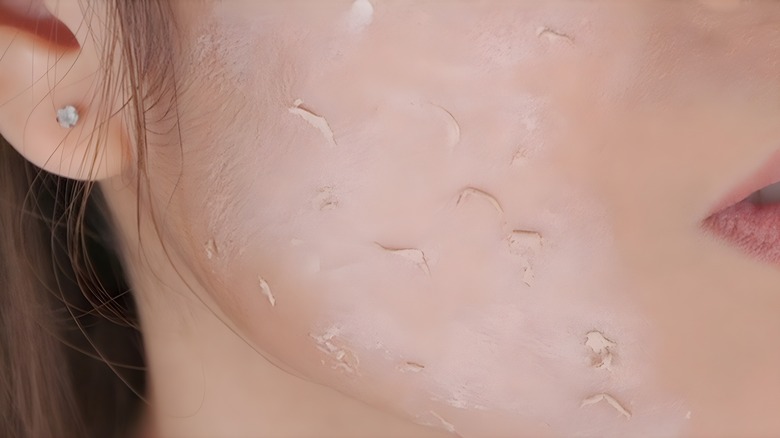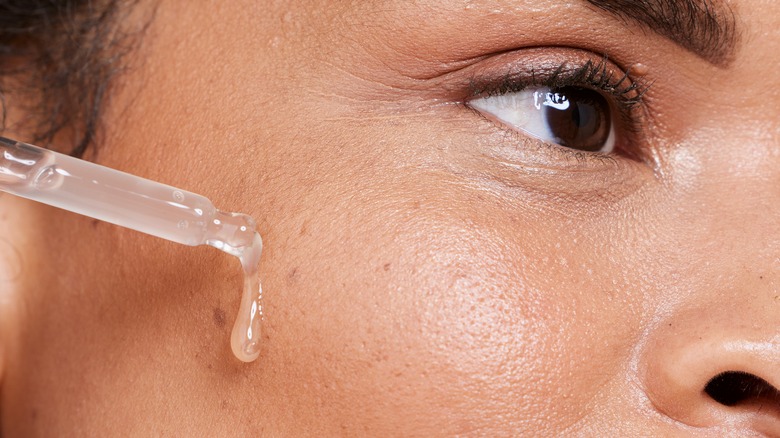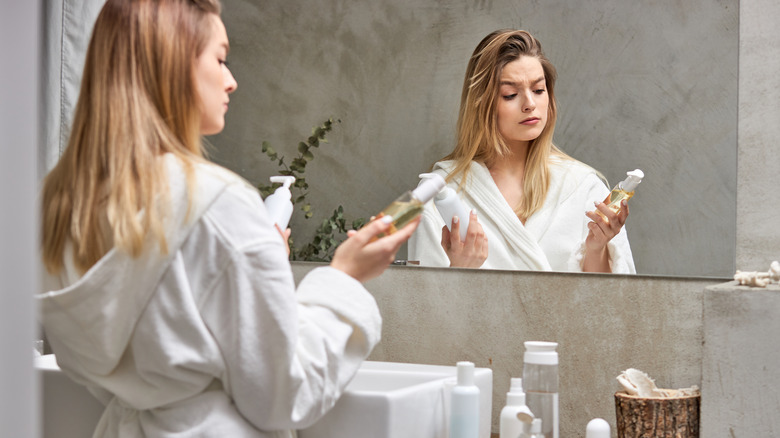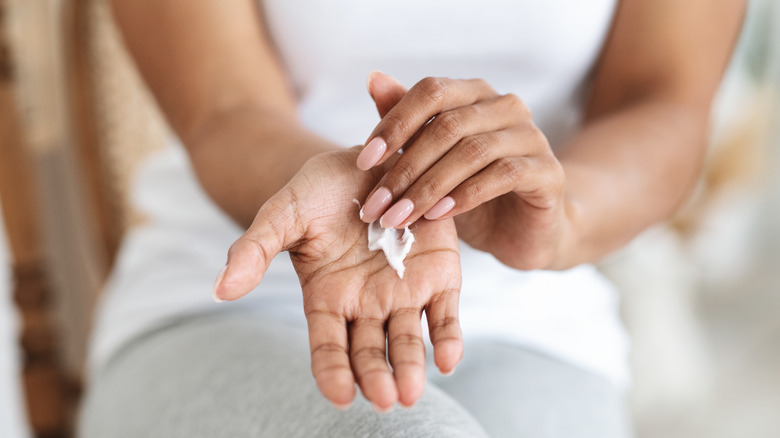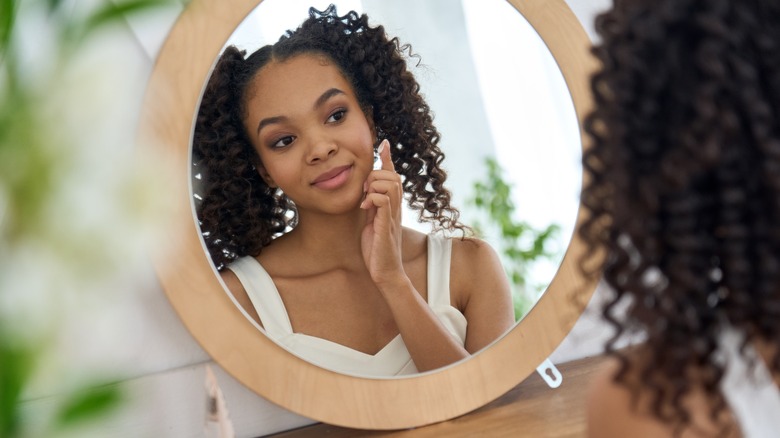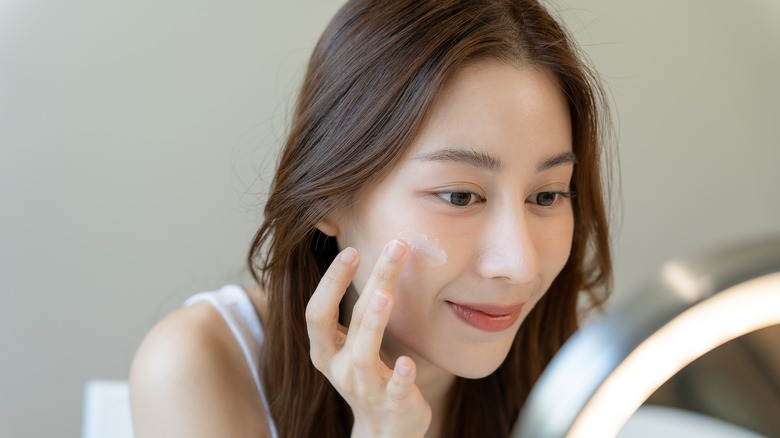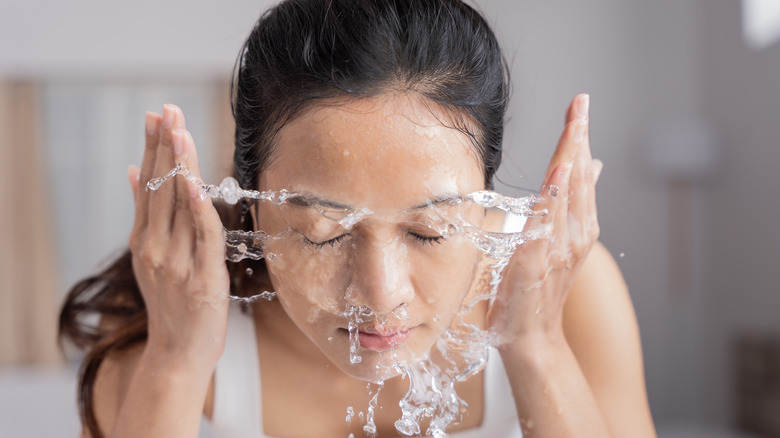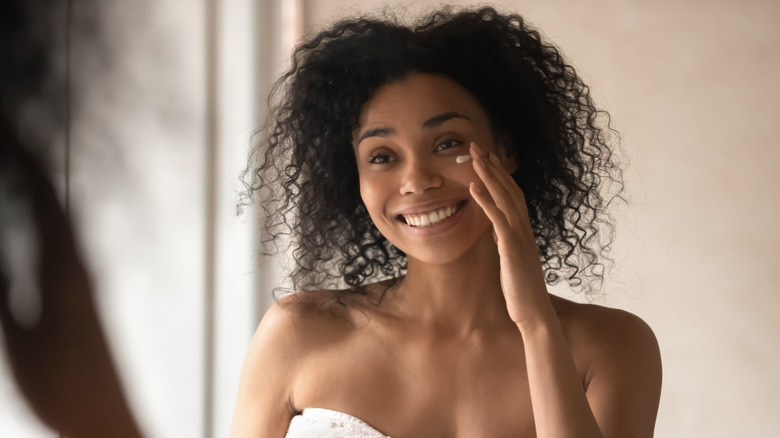7 Important Things To Do To Prevent Annoying Makeup Pilling
All of us are helpless at the hands of makeup pilling. If you're not familiar with the term, makeup pilling is when the expensive products that we lather on our faces crumble up and form little balls. And when this happens we go into panic mode and try even harder to blend those little balls in, which unsurprisingly makes everything worse. Let the pilling happen and it's downhill from there, but know how to prevent it and the world is your oyster — at least with all things makeup.
It's frustrating to expect a glowy, smooth makeup look and end up with a patchy, blotchy look. So, we must do everything in our power to prevent pilling. Though we sound extra dramatic about it, the steps to avoid it are quite simple.
Whether it's your incompatible products, rushed makeup routine, or uncleansed face that's causing makeup pilling, it's not an uncommon phenomenon, and therefore you are not to worry, just follow our tips and you're good to go.
Avoiding silicones
Silicones are a godsend when it comes to making our skin look smoother and glossier, but they are, more often than not, the reason your makeup is pilling.
Silicones are used mostly in primers, moisturizers, and sunscreens, if it looks silky-shiny and smooth upon applying, you'll be sure to find silicones in the ingredient list. But, this shiny look silicones provide come with the catch of being non-absorptive. Our skin doesn't do a very good job at absorbing silicones, so although it gives you that ethereal shiny glow, it'll lead to pilling.
Now, if you really can't do without your silicones, we suggest you apply them in lightweight layers. But, if you always keep ending up with a pilling issue, your best bet is to say no to silicone-heavy products.
To check whether your product contains silicones, check for ingredients that end with "cone", "conol", "silane", and "siloxane". Remember to go easy on the silicones if you're an everyday victim of pilling.
Maintaining peace among your products
Oil-based products and water-based skincare products are forever in conflict with one another, applying an oil-based product on top of a water-based product will disturb the absorption process. The oil-based products will slide off your water-based products, creating a very flaky and unstable canvas. So, instead of putting on different products that come together to give you that complete and perfect makeup look, the use of conflicting products will cause pilling.
When buying products for your skincare or makeup routine, make sure they are either oil-based or water-based. If you have oily skin, going for heavily water-based products will benefit you and if you are suffering from dry skin, we recommend going in the oil-based direction.
However, if your cupboards are already filled with a mixture of both, make sure to space out the application of these conflicting products. But next time you're at the store, make sure your products are all allies.
Using the right amount
Too much of a good thing is still too much, and when it comes to makeup a little goes a long way. So if you're slathering on layers of heavy foundation or if you're really going to town with your sunscreen, you are walking towards a pilling situation.
If your makeup routine consists of heavy creams, foundations, serums, and moisturizers, make sure you are applying a thin, lightweight layer of each product. Another thing to remember is that if your makeup routine consists of layers of different products, starting with primer and ending with highlighter, applying too much primer or foundation, will ruin the process even before it begins.
The recommended "pea-sized" amount from heavy creams and formulas will actively help you avoid pilling, not only does using less save your makeup look it will also help you go easy on your wallet. So, be mindful of how much makeup you're using, because once it starts to pill there's no going back.
The right order
Your makeup routine should be a delicately thought out process if you want to avoid a pilling disaster. Making sure your products are being applied sequentially and in the right order is key to a good makeup routine.
You are going to have to start with the lightweight products and then work yourself up to the heavier creams, making sure you are applying the right amount.
Furthermore, you should start by applying the water-based products, once this is done, you can move on to the oil-based products. Remember that these two do not mix well, so avoid layering them in between one another.
However, the order in which you are applying your products when doing skincare might depend on whether it's a nighttime routine or a daytime routine. The layering process is important when it comes to avoiding pills, mismatching layers can only be avoided by sticking to the right order of application, so make sure you're committed to it.
Take your time
Here's something you need to hear about makeup: you do not have to do your entire makeup routine in one sitting. That's right, there is no such rule, you can do cartwheels or your laundry in between applying your primer and foundation. And, by doing so you might just be saving yourself from pilling.
When our makeup hasn't absorbed itself into our skin, or when it hasn't really settled in with the other layers of product, it becomes crumbly and starts to peel itself off in little balls. One way of preventing this from happening is by taking your time with the layering process. Bear with us, we are not asking you to spend half of your day doing your makeup routine. You can fit in little tasks in between each application, for example, while you are waiting for your primer to settle in, you can read your emails, or make yourself a cup of tea.
Practice giving your makeup routine the time it deserves and you'll never have to see your makeup ball up.
Exfoliate
We exfoliate to get rid of our dead skin cells that get in the way of the absorption process of products. And if you were to rarely ever exfoliate then you're likely to experience makeup pilling caused by the clumping up of these dead skin cells.
Since there's a barrier between your pores and these dead skin cells, your makeup finds itself in a tough spot unable to settle into your skin.
But, how often should you exfoliate? Exfoliate too much and you'll still end up with a pilling situation, your skin will dry out and peel away along with your makeup. Therefore it's crucial we understand exactly how often we should exfoliate. For dry skin, exfoliating once a week is recommended, while oily skin can bear up to two rounds of exfoliation per week.
Not exfoliating is an underlying cause of makeup pilling, so make sure to do regular exfoliating.
Applying your makeup the right way
Rubbing your makeup on your face is barbaric and we do not recommend it, especially if your end goal is not a pilling mess. The way you apply your makeup and the tools you use can make all the difference.
By rubbing the product all over your face, you're only spreading it all across your face, if you really want to benefit from your expensive makeup products make sure they are being absorbed by your skin, and to do this use the "pat and press" method. This is far more gentle on your face and it will prevent your makeup from pilling. You can use a beauty blender or a sponge for a more effective application.
Doing your makeup involves a rollercoaster of emotions, and there's nothing more terrifying than seeing your makeup become patchy and crumbly, but by following these seven things, you no longer have to fear your makeup pilling.
